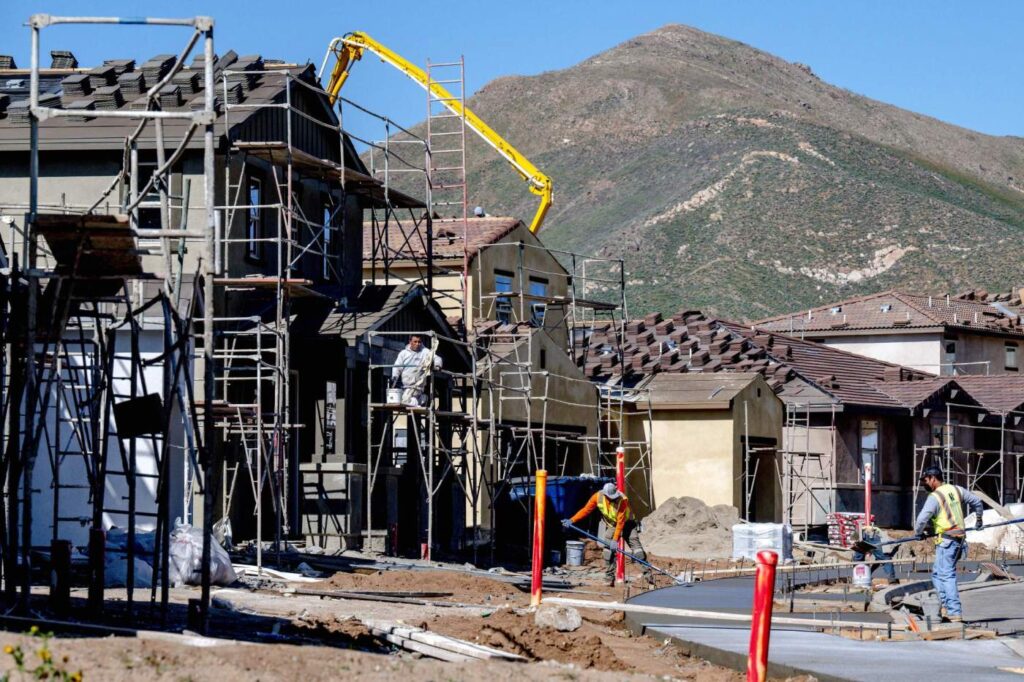
Editor’s note: Click here to view a chart of the CEQA process produced by Dana Beigel Designs for the Pacific Research Institute. A full page version of this chart was published in print in the Sunday, Feb. 27 opinion section.
California is in a quagmire due in no small part to the weaponization of CEQA, the California Environmental Quality Act. We are not providing the physical infrastructure befitting the world’s 5th-largest economy and leading crucible of innovation. Too often, critical projects don’t get built, or are built only after long delays and cost overruns. California, once the land of opportunity, is now ranked dead last by US News and World Report on that metric.
California is failing to provide and adequately maintain basic infrastructure — roads, bridges, rail, water, telecom and wildfire protection. Schools, hospitals, housing and green energy projects all have been hampered by CEQA, which has been weaponized by special interests to increase costs and delay or stop construction altogether.
Infrastructure projects feature prominently in Gov. Gavin Newsom’s $286 million proposed budget. California is also slated to receive more than $45 billion from the $1.2 trillion federal bipartisan infrastructure law. The president charged Mitch Landrieu, who oversaw New Orleans’ rebuilding in the aftermath of Hurricane Katrina, to “make sure these programs get implemented without unnecessary bureaucracy and delay to rebuild America’s infrastructure.” But special instructions and regulatory reforms are needed if California is serious about providing adequate housing and infrastructure.
At the center of California’s infrastructure challenges is CEQA. The Pacific Research Institute’s new report “The CEQA Gauntlet” reflects the axiom that a picture is worth a thousand words by providing a mind-boggling flowchart showing the labyrinthine CEQA review process and permits frequently needed before nearly anything can be built.
CEQA’s impediments to building housing are well known and explain why California is the nation’s most expensive state in which to buy or rent a home after Hawaii. Unaffordable housing also explains why California leads the country in functional poverty at 18%.
No account of CEQA’s pathologies would be complete without San Francisco’s latest act of insanity. Last fall, the San Francisco Board of Supervisors sent a 495-unit apartment project on a parking lot zoned for housing and located near public transit, back to the drawing board, directing a redo of the project’s 1,129 page environmental impact report. The board’s action drew criticism from housing activists, unions, the mayor, and San Francisco’s state senator. The San Francisco Building and Construction Trades Council secretary-treasurer offered that if opponents “or anyone else want to buy the parcel and build 100% affordable housing, good on them, but hurry, because I’ve got families with kids to feed.”
As recounted in the “horror stories” section of the PRI report, CEQA has also regularly been weaponized to challenge construction of public schools and hospitals. Programs to reduce wildfire risks have been delayed with potentially devastating consequences by threatened or actual CEQA lawsuits. Transportation projects (including “green” plans to add bike and carpool lanes) have also faced lawsuits.
Even solar and wind generation projects, which reduce greenhouse gas emissions and bring more affordable and reliable renewable energy onto the grid, have been hampered by CEQA litigation. California must increase the pace of renewable development over the next decade if it is to achieve the clean energy and climate change mandates the state has set for itself.
The Legislature has repeatedly come up short in reforming CEQA to provide the infrastructure Californians need. It is long past time to enact comprehensive reforms to address California’s housing and infrastructure challenges.
Related Articles
California’s new death tax is a year old
The U.S. must avoid going too far leveraging SWIFT against Russia
California faces a ‘big short’ in vital commodities
Newsom and Hertzberg are fighting a losing battle with SCOTUS
Trump and his favorite czar, V. Putin
Reforms should start with stopping special interests from profiting from CEQA litigation. Requiring CEQA plaintiffs to disclose the source of contributions of more than $500 to fund litigation would be a good start. Transparency requirements should also be extended to beneficiaries of settlements. The more sunshine, the better. Requiring all CEQA suits to be initially filed in the Courts of Appeal would make some litigants think twice before filing and encourage those courts to consider whether the “business as usual” filing of CEQA suits is desirable. And the Legislature should impose a moratorium on dispensing CEQA exemptions for one-off projects (in lieu of comprehensive reforms).
Environmental review under CEQA and building infrastructure should not be opposing ideas. Common-sense reforms will enable California to accomplish its environmental goals while providing desperately-needed housing and infrastructure.
Chris Carr is chair of the Environment and Energy Practice Group at Paul Hastings LLP and is co-author of the new PRI study “The CEQA Gauntlet.” Ken Broad is a founding member of Jackson Square Partners and a member of the Board of Councilors of the USC Dornsife Center for the Political Future.
